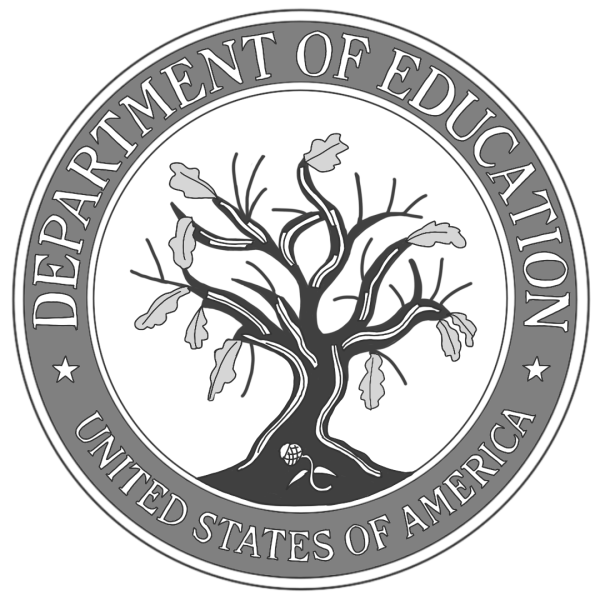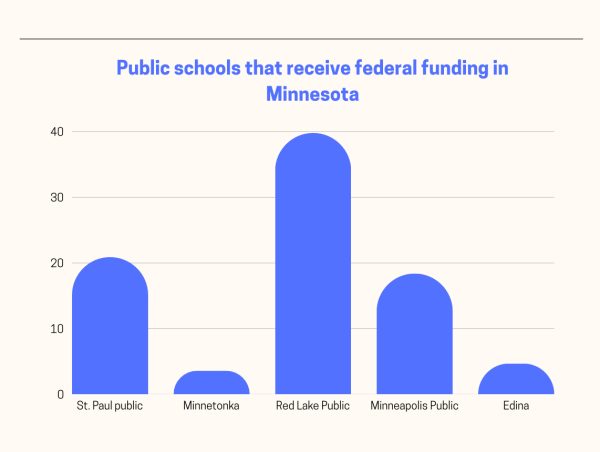Eliminating the Department of Education has been a focal point of Donald Trump’s political platform. His rhetoric has given voice to the longstanding conservative dissatisfaction with public education in America, with Ronald Reagan vowing to get rid of it just two years after it was created in 1980. Grievances with the department range from alleging inefficient funding distribution to costly operations. Under the direction of Trump and the new Department of Government Efficiency, Secretary of Education Linda Mcmahon cut $900 million in research contracts and made drastic staffing cuts, namely a March 11 reduction which cut nearly 50% of the workforce. On March 20th, President Trump signed an executive order to shut down the department. Frustrations with the department are intertwined with the conservative backlash against so-called “DEI” in schools. Trump cites discriminatory college admission policies, extracurricular programs, and “divisive” content in classrooms as diversity essentially gone too far. According to a February 4 poll, 61% of voters oppose Trump’s measure to abolish the Department of Education. A March 11 poll found that while 49% of voters oppose “DEI” programs, 48% support them. At Minnetonka and across the country, educators, administrators, and students have to sort through the endless barrage of news and executive orders to make sense of the changes and figure out how to move forward.

On February 14, the US Dept. of Education Office of Civil Rights sent the “Dear Colleague” letter to pre-K through 12 schools, colleges, and universities. While an expression of the Trump administration’s goals in terms of limiting “DEI” in schools, this letter does not change federal or state law. Rather it serves to “clarify” the federal government’s interpretation of existing case law. The letter conveys that schools may not use “overt and covert racial discrimination” in admissions decisions, relying on a framework outlined in the Supreme Court decision SFFA v. Harvard (2023). Schools may not use “non-racial information” as a “proxy” for race, for example it would be illegal for a school to “eliminate standardized testing to achieve a desired racial balance or to increase racial diversity.” Lastly, it condemns the “insidious” discrimination brought about by “DEI programs” that stigmatize “certain racial groups” by teaching students that those groups “bear unique moral burdens that others do not.” The federal government threatens to withhold funding if schools do not comply with the letter’s interpretation of the law. Importantly, the Office of Civil Rights is not able to terminate funding to a school without the case being heard in front of an agency or court. Even if it is able to rescind funding, a school can still appeal to a court to overturn the decision.
The vague language of the letter sent schools nationwide scrambling to review their policies and seek legal counsel. The Trump Administration has threatened and is investigating over 50 of the nation’s universities and colleges. The impacts of this upheaval are felt outside of the higher education sphere. In an interview with Amna Nawaz for PBS in February, Supt. David Law addressed the impact of the letter on the Minnetonka School District. He describes a careful process of consulting legal experts and state authorities, first to identify “what applies to us?” He explains that Minnetonka will continue to act in accordance with state education statutes and the Minnesota Human Rights Act unless a violation is pointed out that necessitates review. “Right now, we’re just looking for clarity about what this means in a time when we’re committed to meeting the needs of our students,” he says.
Teacher Impact
Uncertainty about the meaning of the “Dear Colleague” letter is pronounced among teachers, especially after the release of the new “anti-DEI portal” for students, parents, and others to report “illegal discriminatory practices at institutions of learning.”
Heather Eyrich has worked at Minnetonka High School for 24 years and teaches IB History and World History. She says the new reporting tool makes her feel “nervous.”
“In Minnesota, we have state standards and school boards approve that their teachers are teaching curriculum that carries out the state standards. If there was a student or a parent or anybody that has a question about that, I would hope they are going to the teachers and then to the school and then to the school board to deal with those issues. That’s the process that has normally been in place,” she says.
While discrimination by identity or status is a relatively concrete category, the portal’s aim to limit the spread of “divisive ideologies and indoctrination” within the classroom is an unprecedented federal imposition of power on school curriculums. The Trump Administration’s January 29th Executive Order, “Ending Radical Indoctrination in K-12 Schooling,” outlines its vision for school curriculums. Seeking to eliminate any notions that certain groups are “privileged” over others because of their race, gender, sex, national origin, etc. and blaming the education system for making children question their gender identity, the Executive Order promotes a “patriotic education.” All instruction must portray “an accurate, honest, unifying, inspiring, and ennobling” account of America’s founding, present how the US has “admirably grown closer” to its “noble values” over time, and instill that the celebration of American “greatness and history” is “proper.” The Order also prohibits schools from enabling the social transition of transgender and gender non-conforming children, which is proven to be destructive to children’s mental health and social skills.
Any school or program found not complying with the terms of the EO by April 29th will have their federal funds taken away “to the maximum extent consistent with applicable law.” The federal government has never been responsible for school curriculums. Despite the president’s claims that he wants to send education “back to the states,” the Trump Department of Education is expanding federal power in the realm of education, taking power away from states and local areas by undermining state curriculums and demonizing educators.
Cheryl Duncan has taught history at Minnetonka for 28 years. She says “I feel like [the reporting tool] is more about encouraging self censorship […] History is political […] the story of US history has been, by our state standards, a story of progress, yes, but a story that also includes a lot of suffering and exploitation and discrimination. The moral of that story is that we need to know those things to understand where they are today and what still could be accomplished. If that’s not the story that the current administration wants schools to tell, that would really dramatically change our history curriculum.”
With regard to new teachers, Duncan says, “[they] may make mistakes and maybe those mistakes could be costly in this environment.”
Despite the storm of new changes from the executive branch, Minnetonka teachers and administrators remain confident in the state and school board’s jurisdiction on education. Kimberly Meehan, Co-Chair of the Social Studies Department, VANTAGE Public Policy and Global Studies and Economics teacher, Mock Trial advisor and YIG delegation advisor has taught at Minnetonka High School for 9 years. “As a professional and an experienced teacher of government, my content has not changed. I don’t know how other teachers are reacting in the classroom, but I can say that I feel confident in how I teach my courses and how we create an atmosphere for students to think for themselves. I feel confident in the content that is delivered in the classroom and the conversations are very student-centered. In the end, it’s about students and it remains to be seen how the students will respond,” she says.
“We’re lucky that we are in a state where there are school boards and a superintendent that guides us and state standards. I think there is a lot of power in the state standards right now, because that gives us unity as the state of MN. But if there are federal challenges, we’ll have to see what holds up,” says Eyrich.
Supt. Law validates this feeling of uncertainty. “Everyone is seeking clarity. The hardest part about it is over the last six weeks there’s been a lot of concepts shared but so many things are being challenged that it’s too early to have a knee jerk reaction,” he says.
Cultural and Ethnic Student Groups
MHS houses a community that values students of multicultural backgrounds. While student affinity groups in higher education are fighting the federal government to stay operational, student groups in K-12 public schools are unsure of their position.
“I would hope that students would be able to continue being in clubs that give them a sense of belonging in the school,” Duncan says, “[getting rid of affinity groups] would be a loss.”
The Dear Colleague letter claims that schools cover up their acts of discrimination with DEI initiatives. This is false, as well as completely negates the benefits these clubs provide. Delilah Wolter, ‘28 said, “people of different races do have different experiences … it’s nice to share with people of the same race.” The various student unions like Hispanic Student Union, Asian Student Union and others alike provide minorities with the chance to gather and speak in common languages and reflect on similar experiences.
The “Dear Colleague” letter also states that under specific circumstances those clubs can still meet if there are students from all other races that are a part of it. Sam Mendell, ‘26 said, “I’m part of Jewish Student Union, and while we’re always open to non Jewish people coming to the meeting… I think having a requirement put in place would definitely negatively impact individuals [in other ethnic clubs] because now it’s not the same.”
“No one thought that before that letter […] If I were apart of [an ethnically centered club] at the high school I wouldn’t be discriminated against. I decided to be there. It’s the students’ choice,” says Valeria blank, ‘blank.
Student leaders like Noah Mendez Rosario, ‘25, president of HSU, recognize that their clubs might feel pressured by the agenda of the executive branch. “From what I’ve seen, I feel like less people are going to be open to participating, which will feed the exclusivity of the school since it is a majority-white school. Maybe not to a great extent, but it will certainly ostracize people who aren’t white,” says Mendez Rosario.
Defunding Landscape
Apart from the attack on “DEI” in schools, the Trump Administration is also gutting the Department of Education. As it pertains to K-12 public schools, the Dept. of Education mainly deals with funding for special education programs and disadvantaged schools (Title I). While getting rid of the department and funding programs themselves would require an act of Congress, the executive branch is able to decrease oversight for funds and transfer them to other understaffed departments. The Trump Administration has claimed that changes to the Department will continue to protect “K-12 students, students with special needs, college student borrowers, and others who rely on essential programs,” education advocates, teachers, and lawmakers around the country are anticipating negative impacts on students and communities.
Supt. Law is confident in Minnesota’s commitment to protecting special education. “I have been to the US capitol five times in the last five years to talk about special education funding, nothing has moved […] There might be federal reductions across all areas, but that has been one of the most stable funding streams for education […] In Minnetonka, between 80-90% of our federal funding is directly for special education programs. Those are very vocal families and students who are worthy of an investment,” he says.
With regards to federal funding as aid to disadvantaged schools, Minnetonka Public Schools will not be greatly affected. “3% ofour budget is federal funds. There are districts where it’s 25% or more. I would hate to lose any federal funding, but 97% of our district would be whole even if there are funds that were completely shut off, which I can’t imagine would happen. If I was in a district where 1 in 4 dollars came from the federal government, I would be terrified. Part of that is federal funds are allocated for the percentage of the population that receives services under special education and poverty. And a lot of southern states or states across the country receive a lot of money from Title I. So, what I’ve heard is that there will be bipartisan pushback to cutting Title I funds because so many students benefit from it,” says Supt. Law.

MHS student Sam Mendell, ‘26 says, “I believe in the Minnetonka Community here, […] it’s super possible to rally behind [raising money for schools] and you know make up that money because there are a lot of people here with funds to give.” However, he acknowledges that less fortunate schools will see greater consequences in cutting school funding, “In schools with [non white] races in the majority, it could really affect them in a different way than it would to us.”
One aspect of the manipulation of federal funds is that Title I schools who rely on support from the federal government are also the most vulnerable to its “anti-DEI” efforts. In a wealthy district like Minnetonka, taking away federal funds will not threaten the functioning of the school, thus the executive branch’s threats do not hold very much weight. However, in a more disadvantaged area, like the St. Paul Public School system who received 20.9% of their funding from federal sources in 2024, this threat is much more significant. Thus, poorer districts are more intimidated by changes. These poorer districts also often have a higher population of marginalized students whose alleged outsized influence is what the Trump Administration is seeking to combat by doing away with the philosophy of “DEI.”
Moving Forward
Almost all changes happening at the federal level are not being felt in K-12 public schools yet. Despite the myriad of concerns that educators have, executive orders are not laws, so the extent to which school functioning and policies will actually change is uncertain.
“Minnesota has a set of state laws that protect individuals. If they protected individuals more than federal laws, those state laws supersede federal laws. So one of the things people are trying to figure out is if there are federal pieces of guidance that take away rights that Minnesota gives to [its] citizens, what takes priority? And case law supports that states have the ability to protect individuals more than federal law. People are trying to figure out what is going to change, and no one has the answer. With every week that passes and nothing changes, people should feel a sense of calm, there is going to be an opportunity to transition if changes happen at all,” says Supt. Law.
While some schools have begun to prematurely censor expression and programs that can be interpreted to be “DEI” related, individual districts are in a position to decide whether or not they want to protect affected programs and students. Seeing as one 2024-2025 School Board goal is to “deepen the implementation of belonging efforts,” Minnetonka Schools are certainly using language that could be construed as relating to “DEI.” To protect schools from potential executive investigations, Brama says, “we would have to sacrifice the imagery rather than having forward facing district policies […] I still think we should emphasize those principles in the classroom where they can’t go look and cut our funding”.
Amidst all the chaos, teachers are staying resilient. Meehan says, “I was in the legal field […] This was my second career. Honestly, [being an attorney] didn’t fit right, and there was an opportunity to become a public educator through a loan-forgiveness program. I saw the opportunity and even through substitute teaching, I was like woah, this is what I’m supposed to do. So it just fit. It honestly doesn’t feel like a job, this is just what I’m supposed to be doing.”
“We’re professionals, we’re trying to do the right thing. You get into education for a certain reason. I just hope that teachers continue to do what they do,” says Meehan.































